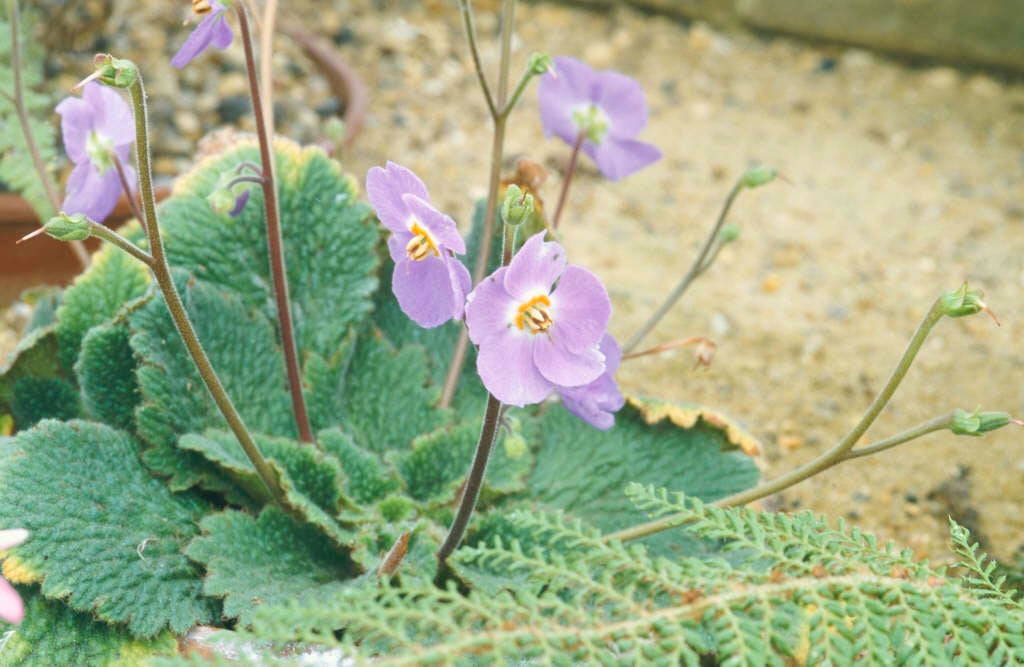Ramonda myconi
Pyrenean violet
An evergreen perennial to 10cm in height, forming a rosette of broadly ovate, hairy, dark green leaves. Flowers 2.5cm in width, with five rounded violet-blue petals and yellow anthers, in clusters on leafless stems

Buy this plant
Size
Ultimate height
Up to 10cmTime to ultimate height
2–5 yearsUltimate spread
0.1–0.5 metresGrowing conditions
Moisture
Moist but well–drainedpH
Acid, Alkaline, NeutralColour & scent
| Stem | Flower | Foliage | Fruit | |
| Spring | Blue Purple | Green | ||
|---|---|---|---|---|
| Summer | Blue Purple | Green | ||
| Autumn | Green | |||
| Winter | Green |
Position
- Partial shade
Aspect
North–facing or West–facing or East–facing or South–facing
Exposure
Exposed or Sheltered Hardiness
H5Botanical details
- Family
- Gesneriaceae
- Native to GB / Ireland
- No
- Foliage
- Evergreen
- Habit
- Clump forming
- Genus
Ramonda are evergreen perennials forming rosettes of crinkled, hairy leaves, with solitary or clustered flowers in late spring and early summer
- Name status
Correct
- Plant range
- Pyrenees to NE Spain
How to grow
Cultivation
Grow in moderately fertile, humus-rich, moist but well-drained soil in partial shade. Plants grow best on their sides to avoid accumulations of moisture in the rosettes, which may cause rotting in winter
Propagation
Propagate by seed or root leaf cuttings in early autumn
Suggested planting locations and garden types
- Patio and container plants
- Rock garden
Pruning
No pruning required
Pests
Diseases
Generally disease-free
Love gardening
Sign up to receive regular gardening tips, inspiration, offers and more
View our Privacy Policy
Get involved
The Royal Horticultural Society is the UK’s leading gardening charity. We aim to enrich everyone’s life through plants, and make the UK a greener and more beautiful place.